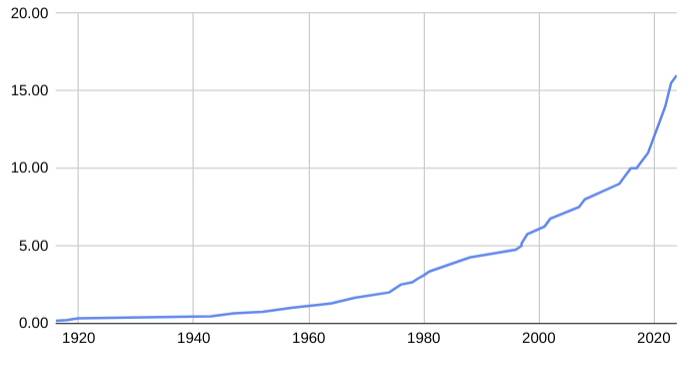“From the moment students enter a school,” said President Barack Obama at the 2009 Hispanic Chamber of Commerce, “the most important factor in their success is not the color of their skin or the income of their parents, itís the person standing at the front of the classroom.”
Our President’s fitting comment is a prelude to the Vergara v. California case. This landmark case struck down any laws that prohibited schools from providing students with the most effective teachers possible.
Citing Brown v. Board, California State Judge Rolf Treu claimed that California’s grossly convoluted tenure system, was well as the principle of “last in, first out,” undermined the precedent of equal opportunity of education established in Brown.
Treu’s assessment of the California tenure system is spot on. Convoluted and unfair are but a few words that describe this broken system. First off, the permanent employment law forces administrators to grant or deny teachers permanent employment within 16 months. This means an administrator must decide on the status of a teacher before he or she has completed teacher induction programs. And more importantly, 16 months is definitely not enough time to measure the overall long-term effectiveness of a teacher.
And this is where the system gets even more absurd: firing an ineffective teacher is a bureaucratic system so convoluted that it borders on impossible. Firing a tenured teacher, a teacher who has been granted heightened job security, requires years of documentation, hundreds of thousands of dollars, and still rarely works. Districts would rather move a teacher to a different school within that district than remove him or her outright.
According to a survey of 275,000 teachers national wide conducts by Students Matter, exactly 2.2 percent of all California teachers are fired yearly for ineffectiveness, which is 0.0008 percent of all California teachers. Yet, according to a national survey conducted by Public Agenda and Learning Point Associates in 2010, 59 percent of teachers reported that there were a few teachers in their building who “fail to do a good job and are simply going through the motions” and 18 percent of teachers reported there were more than a few. Furthermore, according to the New Teacher Project, a survey done in 12 districts nationwide, 81 percent of administrators and 58 percent of teachers believe there is a tenured teacher in their school who delivers poor instruction.
These numbers do not add up.
They are a reflection of a fundamental problem in the California education system, a problem reflected in flawed tenure laws. However, tenure is a side-effect of a greater institutional failure, not the root cause. It was not created on a whim, but for the purpose of trying to fix a problem inherent in California, which ranks 43rd out of 50 in per student spending, and yet over a quarter of total state spending goes to education.
The issue of tenure comes down to the ineffective spending of and inequitable distribution of funds. Tenure is, from an economic standpoint, a measure to remedy budget problems by forcing schools to keep experienced teachers. Like most educational policies, its original intent was to protect students and teachers from the financial pitfalls schools often face. Some of the financial problems faced by public schools are spurred by federal laws such as “No Child Left Behind,” which costs billions yearly to maintain, while having little to no significant impact on the nation’s educational ranking. The bureaucracy present in state funding of public schools also leads to inefficient use of those funds. MVHS, which is funded mainly by property taxes, does not face this issue to such a large degree, but it still must adhere to California policies when it comes to budgeting.
With this in mind, it is logical to examine the details of tenure and what each part of the system is meant to accomplish.
Tenure was created because prior to the two years in which teachers are not tenured, they are probationary employees. Thus, it is tenure that grants them any kind of job security. Job security is crucial in a job in which anything done by a teacher that looks unfavorable to administration, students or parents of students can cost them their job. If an incompetent administration is in place, teacher turnover time can occur regularly and sporadically, which detracts from student learning.
Furthermore, experienced teachers are more expensive. Thus, when a district confronts money problems they may prefer to look towards dismissing experienced teachers and replacing them with cheaper teachers that have less experience and qualifications. This potential problem is the reason we have “last in, first out” — a policy that protects experienced teachers by having schools layoff the last teachers they hired if reductions occur — as well as tenure in place. The state tries to compensate for the distribution of teacher salaries by making the price of firing an experienced teacher higher than the money saved by replacing them with a less expensive teacher. Unfortunately, the state has equated experience with effectiveness, a crucial mistake that costs students dearly.
While the security net offered by the tenure system provides a large enough buffer for errors to promote creativity with teaching, it also can serve as a refuge for incompetent teachers who abuse the security given through tenure.
For the tenure system to succeed there needs to be an easier way to remove these ineffective teachers. It should not be so costly to fire an incompetent teacher and it should be a process that lasts no more than a year to ensure the least possible number of students are exposed to that teacher. Also, tenure should only be given after four or five years of teaching at a school. Administration thus has twice as long to tell how effective a teacher is and there is a larger pool of students to evaluate the teacher.
The catch here is that teachers should have more job security right from the start. This means that even before tenure they should only be removed for legitimate reasons. During the probationary period, it will be easier to terminate teachers than after they have tenure so receiving tenure is still an important career milestone.
However, another problem lies in identifying which teachers are ineffective. A teacher, with or without tenure, is held to certain expectations, the easiest of which to evaluate is their students’ scores on standardized tests. The problem with this simplistic approach is that it does not necessarily reflect the teacher’s capacity for teaching, but instead the student’s knowledge — whether that knowledge was self-taught or taught by the teacher cannot be determined by the results of these tests alone.
In addition, teachers are evaluated by administration officials. However, in most schools, including MVHS, the number of teachers dwarves the number of administration officials. Because of this, teachers are only evaluated on a yearly basis as administration simply lack time to consistently sit in on classes. Furthermore, administration is not the final authority on teacher effectiveness. It takes three to five years of teaching to become an administration official, while a teacher may have been teaching for a much longer period of time and knows best what works and what does not in certain classes. This could also disadvantage certain teachers who employ unconventional teaching methods, even if those methods prove effective for the class.
This is where a third part of teacher evaluation may help fill the gap. New programs like Panorama Education have created anonymous surveys that allow students to answer very specific questions about their experience with their teachers. Teachers then have access to the survey results, which are so detailed they can tell teachers which demographics they are appealing to most and which groups of students are not finding their teaching methods effective. These surveys are starting to pick up steam in the academic circles and many, including Panorama’s, are provided free of charge to schools.
So we are left with the question of whether teacher tenure should be in place. Yes or no? This is the trick question your teacher puts at the end of the test for extra credit points, smugly aware that nobody will get it. As our mind battles between “yes” or “no,” we fail to realize there are an infinite amount of options between those two words — utilizing Panorama Education being just one. The only way to sift out the best option is by trying and failing and then trying again. Although guess and check may be considered a childish way of solving the extra credit problem, it is the necessary approach as this problem has no definite equation to use or method to follow that will lead to the perfect answer.




















